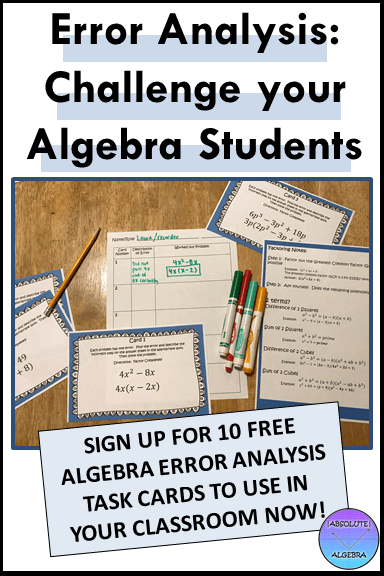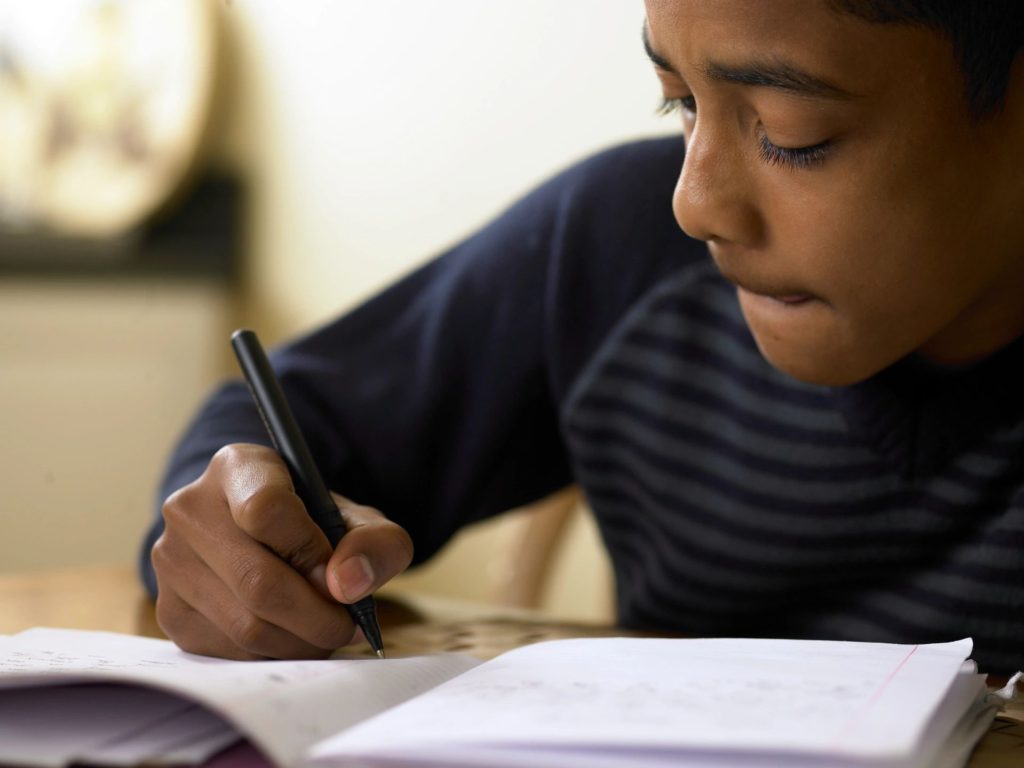One day during my math class, I made an error when presenting the material. A student very nicely told me that I made a mistake and I was genuinely happy that he caught the error early so I didn’t finish the rest of the problem incorrectly. He was excited to help the teacher and I was sure to let him know that I appreciated he was paying attention so closely. Error analysis is a valuable critical thinking skill for students. Here are some ways to challenge your students with error analysis that you can implement in your class right away!

Increase Understanding of Concepts
When you let students find the error in problems, they can better anticipate and understand common misconceptions. More importantly they become better problem solvers, find patterns in problems, and make less careless errors themselves.
Classroom idea
“My Favorite No” is an empowering way to show students that it’s okay to make mistakes in a math problem and teaches them how to grow and learn through their errors.
- Have students solve a problem on a note card.
- Collect them and look for one with an error that
you want to display in front of the class. - Rewrite the problem in your own handwriting so
the students can’t tell whose problem you are displaying. - Have a discussion about the mistake, how to fix
it, and how to avoid making the same mistake in the future.
Think Critically with Error Analysis
Error analysis task cards can be used as a whole group activity and foster enriching classroom discussions.
Classroom idea
Use error analysis task cards as a starter. When students walk in the room they can get in the “math mindset” by seeing how quickly they can find the error. Have them write briefly about what the mistake was and why it was made, and then solve the problem correctly.
Collaborate with Other Students
Students can talk to each other andsee how each one defends his or her stance on where the error is.
Classroom idea
Put your students in cooperative groups and give each one a job. Here are some jobs you can create to make sure everyone is doing their part.
Leader: The leader makes sure that all the voices of the group are heard. He/she makes any final decisions for the group.
Presenter: The presenter demonstrates and explains a completed problem to the class.
Time Keeper: The time keeper encourages and reminds the group that they need to stay on task to be able to complete the problem in the allotted time.
Now give your students some task cards and let them practice finding the errors together.

Struggle and Patience
Teach students to learn to be patient with themselves when challenged. Make sure you keep a close eye on who is getting frustrated so that you can have a meaningful discussion. Ideally as a student practices and succeeds finding errors in problems, he/she will develop a mindset to keep trying and to welcome feedback and assistance. They will academically grow and realize that the struggle was worth it.
Other Error Analysis Ideas
After a quiz or a test, give your students a correction sheet so they can find their own errors and make corrections. Ask them to intentionally look to see if there is a common type of mistake they made more than once. For example when adding fractions with unlike denominators did they remember to create equivalent fractions each time? The next time they work a problem like this, that error should be in their mind so theydon’t make it again.
Let students make error analysis cards for other students to find mistakes. When students are finding the errors be very specific as to what the error is. Have them highlight the area where the mistake occurred and then explain what exactly happened in their own words. For example: Was the error a calculation mistake which can be avoided with practice? Or was it a conceptual mistake in which the student didn’t yet understand the correct steps to take to solve the problem? Let your students draw conclusions about their work in order to recognize their mistakes.

How do you use error analysis in the classroom?
Let me know in the comments below.





